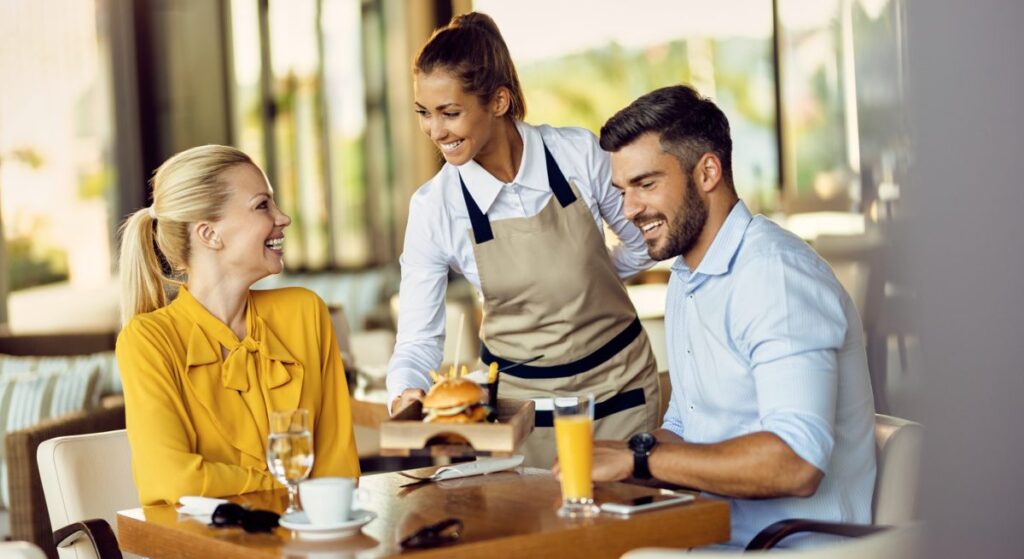Creating a welcoming atmosphere in your restaurant is more than just aesthetics; it’s a powerful marketing tool that can significantly enhance your guests’ experience. From the moment they step through the door, the layout, decor, and lighting all play crucial roles in shaping their experience. A thoughtfully designed environment can evoke emotions, encourage conversations, and even drive repeat visits. So, I’ll share my top tips for creating an inviting atmosphere that not only captivates your guests but also reflects your brand identity.
Organise Your Condiments

When it comes to enhancing the presentation of your restaurant tables, organising your condiments in a quality caddy is a must. One of the standout items to include is a durable olive oil bottle. Since olive oil is a staple for many guests, having a stylish and sturdy container is essential. Not only does it need to be resilient enough to withstand regular use, but it should also look aesthetically pleasing on the table.
A well-designed bottle of olive oil can add a touch of elegance to your dining experience, making it not just functional but also a part of the overall decor. By focusing on the details, you can elevate the dining experience and make a lasting impression on your guests.
Why Store Olive Oil in a Glass Bottle?
Using an olive oil bottle made of glass isn’t just about aesthetics – it’s a smart choice for preserving quality and taste. Glass is made from natural materials and acts as a complete barrier, preventing any chemicals or oxygen from affecting the oil. Specifically, amber and green glass provide excellent protection against UV rays, which can lead to rancidity. A study from the University of Piedmont (Marengo, 2017) even found that green UVAG glass outperforms tin, PET plastic, and bag-in-box options in preserving olive oil’s integrity.
Consumers also have a strong preference for the glass bottle of olive oil. According to a 2020 survey by Friends of Glass, more than half of European consumers prefer purchasing glass bottles. Many of them have shifted away from plastic and view glass as the best option for preventing food contamination and ensuring health.
So, why is glass the go-to choice?
- Transparency: The natural look of glass allows the brand’s identity to shine through;
- Versatility: You can find these olive oil bottles for sale in various shapes, sizes, and colours, making them ideal for maintaining oil quality;
- Premium appeal: Glass conveys luxury, helping olive oils stand out;
- Creative design: Unique glass designs can reflect the Mediterranean heritage of this condiment, enhancing its overall appeal.
Safety and Comfort

Regulations in the restaurant industry are crucial – they go beyond merely ticking boxes. They play a significant role in ensuring that your restaurant is accessible to everyone. When designing your seating area, you need to consider both the size of your restaurant and the regulatory guidelines that dictate the layout. Generally, you should allocate at least 18 square feet per diner and maintain a minimum of 36 inches between tables to ensure smooth traffic flow. It’s also important to have at least 5% of your seating designed to be accessible, whether that’s through booths or fixed seating options.
When sketching your floor plan, think about how all the elements fit together to create a cohesive, efficient space that enhances the customer experience. Consider the quality of your furniture. While comfort is important, especially in a fast-food environment, opting for practical materials is crucial. Plush seating and wooden furniture might not be necessary if you want to encourage high customer turnover. Instead, durable plastic chairs can strike the right balance – comfortable enough for your customers but not so cosy that they want to linger all day.
Colour Scheme
Colour psychology is a key factor that you shouldn’t overlook. The colours you choose can significantly impact your customers’ emotions and perceptions. For instance, green often represents freshness, making it a great choice for conveying the quality of your ingredients. Neutral colours can create a comforting atmosphere, while vibrant reds can stimulate appetite and increase hunger. Essentially, the shades you incorporate will evoke specific feelings in your space, ultimately influencing people’s cravings for your food.
Music

When designing your restaurant space, the type of noise is just as crucial as its volume. If the noise level is too high, it can hinder conversations, causing customers to rush through their meals and leave sooner than they’d like. A 2011 study found that loud background noise can even dull diners’ taste sensations, which isn’t ideal for anyone trying to enjoy a meal.
While excessive loud music can be off-putting, finding the right balance can work in your favour. Environments that mimic the natural noise levels of quick-service restaurants can create a lively atmosphere, encouraging diners to relax, stay longer, and ultimately order more food. This can help boost your average sale value while ensuring that your customers leave satisfied.
Keep Employees Happy
While creating a welcoming atmosphere for your customers is essential, it’s equally important to design a practical and safe layout for your staff. Ensuring that your employees have designated spaces, such as separate entrances and areas for breaks, can help prevent congestion during busy times. These spaces don’t have to be extravagant or oversized; even simple locker rooms, breakout areas, and offices can provide the privacy and comfort your team needs to recharge.
When your staff feels safe and supported in their work environment – whether through comfortable uniforms, adequate facilities, or a well-organized commercial kitchen – they’re more likely to deliver exceptional service. A thoughtful layout that prioritizes your employees’ well-being not only enhances their job satisfaction but also positively impacts the overall dining experience for your customers.


